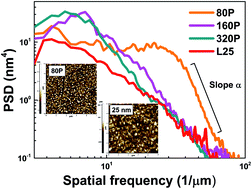Strong correlation between flux pinning and epitaxial strain in the GdBa2Cu3O7−x/La0.7Sr0.3MnO3 nanocrystalline heterostructure
Abstract
The effect of magnetic flux pinning is investigated in GdBa2Cu3O7 (GdBCO) thin films with two different types of ferromagnetic La0.7Sr0.3MnO3 (LSMO) buffers (nanoparticles and a layer) deposited on an STO substrate. Magnetization analyses reveal the presence of multiple flux pinning mechanisms responsible for the improvement in the critical current density of GdBCO films. While core pinning becomes a dominant pinning mechanism in GdBCO films with LSMO nanoparticles, a hybrid effect of magnetic-volume and core-point pinning is observed in GdBCO films with LSMO layers. Examinations of local structures for both LSMO and GdBCO using extended X-ray absorption fine structure spectroscopy (EXAFS) exhibit a close relation between the parameters in the pinning force scaling and the length ratio of the Mn–O bond to the Cu–O bond. This result implies that the origin of core pinning is probably attributed to epitaxial strain induced by lattice mismatch between LSMO and GdBCO. Therefore, an appropriate strain state of LSMO is required for an effective operation of magnetic pinning.



 Please wait while we load your content...
Please wait while we load your content...